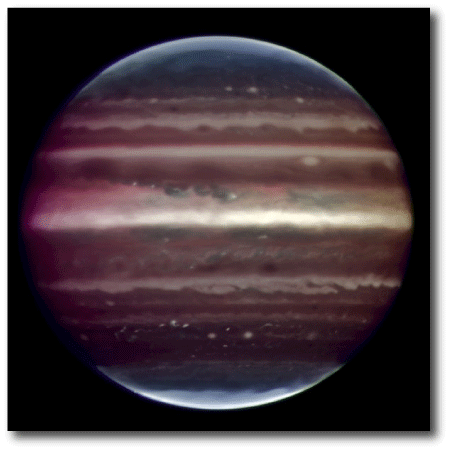
Image Source: ESO
Two weeks ago, I spent a day with a team from Flight 33 productions working on an episode for the ongoing Universe series on the History Channel. Over the past several seasons I’ve appeared on occasional episodes of this show, either in connection with extrasolar planets or with regards to the ultra-distant future. The topic of the latest episode was extraterrestrial liquids, running the gamut from the (relatively) familiar and accessible — azure oceans on TPF dream planets — to the bizarre: vast expanses of liquid metallic hydrogen in the interiors of giant planets and hypothesized superfluids miles beneath the surfaces of neutron stars.
How can one get liquid metallic hydrogen’s essence across during a brief segment of commercial television? By comparison, conveying the atmosphere of a Jovian planet is quite easy. Towering sunlit clouds. The chilly deluge of the Jovian rainstorms. The awful smell. Liquid metallic hydrogen, on the other hand, couldn’t be any more alien. It exists at typical pressures of ten million atmospheres. In Jupiter, there are hundreds of Earth masses of the stuff, all at temperatures several times hotter than the surface of the Sun. A handful of the deep Jovian interior, materialized somehow on the surface of the Earth for the sake of demonstration, would instantly explode with fully counterproductive newsworthy effect.

The analogy I came up with is provided at a heavily congested bumper car rink in which the bumper car drivers are free to jump between cars. In this model, the cars represent the heavy protons and the drivers represent the much lighter electrons. Arrangements were made to utilize the Santa Cruz Beach Boardwalk for the filming of this mock-up of the Jovian interior. The logistics of the event drew together a rather diverse range of participants, and the event snowballed to make the front page of the Santa Cruz Sentinel (link to the article).
It’ll be interesting to see how things turned out when the episode airs.

Out of interest, what would the interior of Gliese 436b be like? The media suggested a solid mantle of high pressure ice, but wouldn’t the hydrogen mix in with that, preventing the ice becoming solid?
WHEN does the episode air?
Andy,
The interior of Gliese 436b is probably similar to that of Neptune or Uranus.